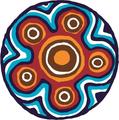Year 8 Term 2 Overview

Year 8 Hums
Danielle
This term in Humanities, students are exploring what makes a place liveable by investigating a range of political, infrastructure, cultural, environmental, economic, and social factors. They'll examine why people choose to live where they do, how liveability can be improved—particularly in suburban areas—and how migration influences population patterns in Australia, China, and globally. Students will also use the geographical concepts of space, place, interconnection, change, environment, sustainability and scale to analyse urbanisation in both developing and developed countries, identifying its causes and impacts. Through case studies, maps, data analysis, and class discussions, students are developing a deeper understanding of the forces shaping our cities and communities today.
Year 8 English
In Term 2, the Year 8 cohort will study Crow Country by Kate Constable. The novel follows Sadie, a young girl who moves to the country town of Boort with her mother. Sadie soon begins forming connections—with the land, with the past, and, most unexpectedly, with the crows. She is eventually transported back in time, where she witnesses a terrible crime and becomes entangled in a mystery. This text supports students in exploring different perspectives and developing their own viewpoints, supported by evidence. In the first five weeks of the term, students will focus on reading the novel and using Cornell Notes to record key quotes about character perspectives and to track important events. In the following weeks, they will prepare written responses to essay prompts, drawing on their understanding of the text.
Year 8 Science ( Priya)
In Term 2, Year 8 Science students develop a strong foundation in chemistry through the study of atomic structure, the periodic table, chemical formulas, bonding, and mixtures. They begin by learning how atoms are represented using diagrams and explore the history and development of the periodic table. Over the following weeks, students investigate patterns and properties of elements, learn to write and interpret chemical formulas, and understand how atoms form compounds through ionic and covalent bonds. The term concludes with a focus on mixtures—how they differ from pure substances, and the methods used to separate them—along with an assessment to apply and consolidate their knowledge.
Year 8 Technologies ( (Zai/Nirmesha):
In Term 2, Year 8 students will apply their understanding of engineering principles to design, build, and refine functional drones. Students will work through the stages of the design thinking process—Ask, Imagine, Plan, Create, and Improve—developing prototypes that incorporate knowledge of balance, stability, and material properties. They will explore how forces such as lift, thrust, drag, and weight interact to affect flight performance. Students will experiment with propeller designs, frame structures, and weight distribution to optimise their drone prototypes. They will use testing and troubleshooting strategies to refine their models, recording observations and data to guide improvements. Safety, ethics, and sustainability will continue to be key considerations as students design solutions with real-world applications in mind. Throughout the term, students will build skills in critical thinking, collaboration, and problem-solving. By the end of the unit, students will present their functional drone designs, reflecting on the engineering decisions they made and evaluating the performance of their prototypes against their original design goals.
In Term 2, students will study the future of food focusing on environmental and ethical challenges that influence what and how we eat. They will examine the major issues confronting the global food system including climate change, food security, energy-use, and sustainable farming. Through case studies, and interactive activities, students will cultivate their critical thinking and ethical reasoning on decisions considering the impact of food choices on people and the planet. This unit builds up to a student-led project in which students work in pairs to develop and pitch a sustainable food innovation to address a challenge of the global food system. This hands-on inquiry will meaningfully link the curriculum to science, technology, and ethics, encouraging collaboration, communication, and real-world problem-solving. By the end of the unit, students will be far more informed, responsible, and future-focused global citizens.
Year 8 Math (Priya)
In Term 2, Year 8 Mathematics students will deepen their understanding of algebra and linear relationships by learning to create, simplify, rearrange, and factorise linear expressions using key number properties such as the commutative, associative, and distributive laws. They will also explore linear equations and inequalities, solving them both algebraically and graphically, and representing them on the Cartesian plane.
Students will apply these skills in real-world contexts through mathematical modelling, particularly in financial situations such as calculating profit and loss. They will learn to choose appropriate representations—like equations or graphs—to analyse and communicate their solutions effectively. Digital tools will be used throughout the term to support learning, allowing students to explore patterns, test conjectures, and build generalisations, strengthening their overall mathematical reasoning and problem-solving abilities.
